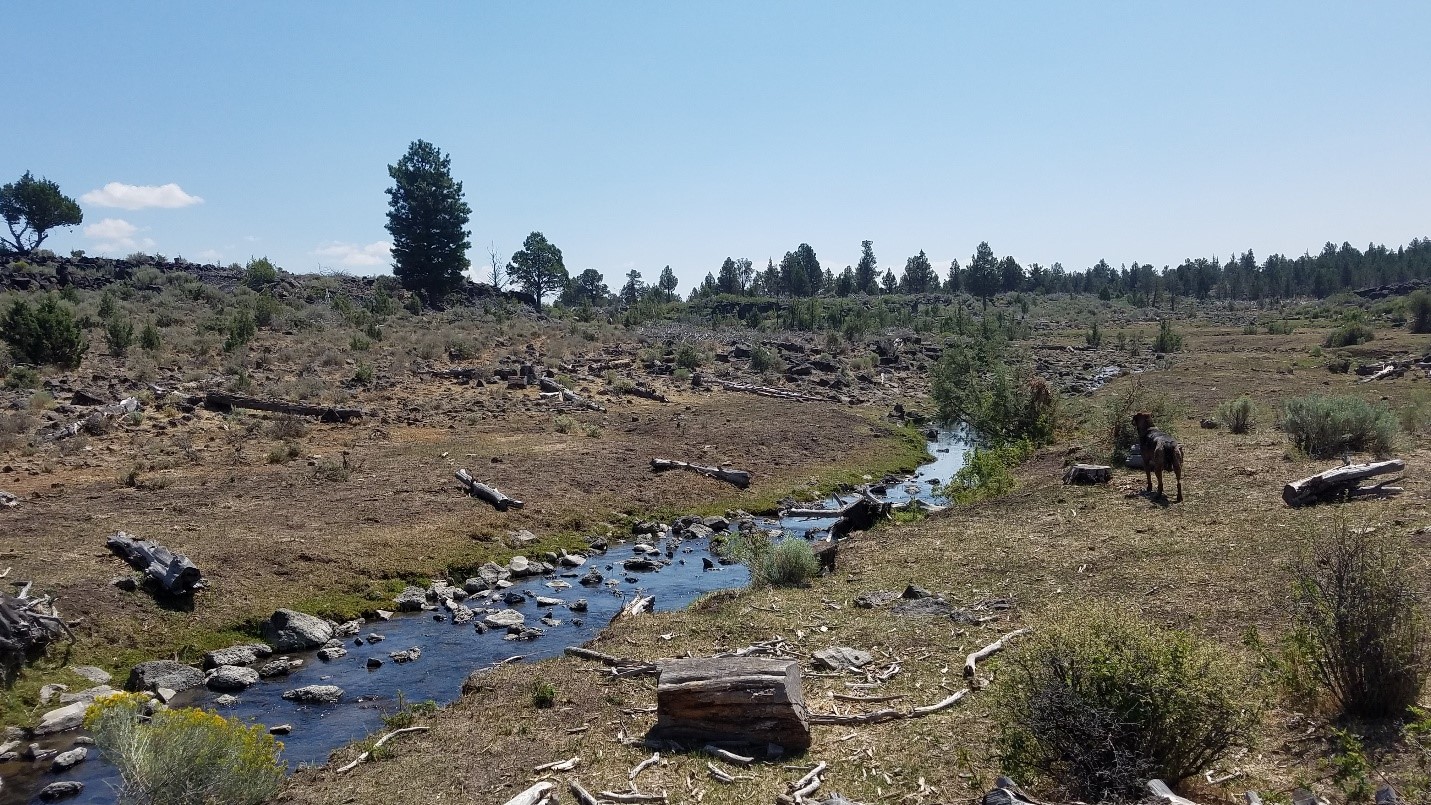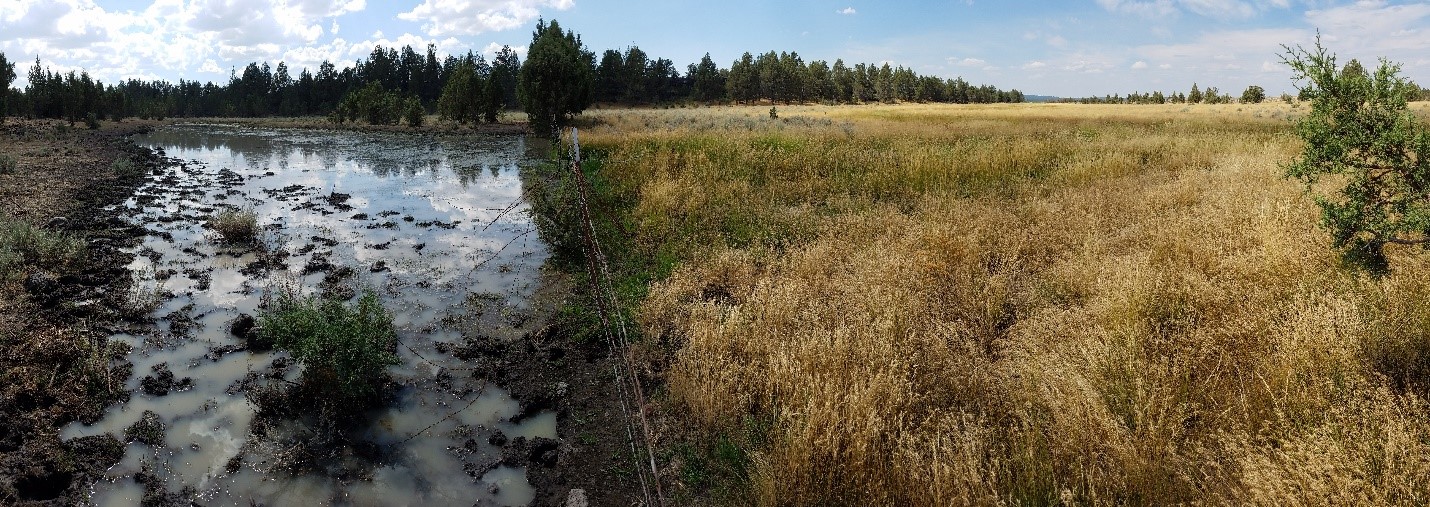Laura Kay Snell of the University of California Cooperative Extension, Modoc County contributed the following perspective in response to Capt. William E. Simpson’s article on wild horse grazing.
Working with public land managers in Northeastern California on USFS and BLM land, the University of California Cooperative Extension has been conducting research on wild horse impacts of springs, seeps, and vegetation. This study, started in 2015, has provided thousands of trail camera photos showing the behavior of wild horses, livestock, and wildlife around natural riparian areas.
In otherwise arid sage steppe rangelands, springs provide critical watering sources as well as wildlife habitat for sage grouse, deer, elk, pronghorn, waterfowl etc. These riparian areas also provide habitat for fish, aquatic insects and plants, some of which are threatened or endangered. What Bill Simpson’s proposal doesn’t address is the stress, destruction, and devastation to these critical habitat areas that wild horses are already causing and the increased use they would see with 60,000 more horses.
Horses are picky eaters, they will choose the best tasting, most nutritious grass and with their mouth structure they can eat those grasses nearly down to the dirt. These highly nutritious grasses are located in riparian areas and meadows where horses will choose to congregate all year long without movement and management. This can be seen on the Devil’s Garden Wild Horse Territory in Modoc County, CA.

This picture illustrates on the left the initiative that Mr. Simpson would like you to stand behind, that horses will eat the vegetation under trees and fires won’t start. What he doesn’t talk about is what happens on the right, a natural spring degraded to bare ground and few annual grasses. The water quality suffers as the plants that would provide shade to the water are eaten, causing the water temperature to rise. Vegetation that would provide habitat for aquatic insects, nesting bird species, and many small mammals is gone. A 20% streambank alteration is allowed in livestock grazing situations, when this picture was taken, the alteration was nearly 100%. Livestock are managed and would have been moved from this pasture weeks ago but wild horses are left to graze unmanaged 365 days a year.

Here is another example of a natural spring that has been overgrazed by wild horses. You will notice that there is very little grass and therefore wildfire would most likely not burn this area. The caveat is that wildfire would not likely burn this area in the first place with good riparian management and managed grazing. The wild horses have degraded the water quality, streambanks, vegetation, and the entire workings of the riparian ecosystem. With management, the water table in this valley would be higher, promoting more native grasses which stay green and pliable later in the growing season which in turn also shade the ground, allowing the ground to stay wetter longer. If a wildfire approached this area, it would most likely die out on its own.
Horses do not choose to walk long distances to eat invasive annual grasses that are the fuel of wildfires in the western United States. Horses instead will choose to stay in these riparian areas and eat every bit of green grass. Only when all the green grass is gone will they walk short distances to find other feed.
Even if Mr. Simpson’s proposal worked, wildfires are a natural part of this ecosystem and although there are unnatural fire regimes and fire return intervals at play here and across the west, is allowing wild horses to degrade the rangeland at the cost of every other species a trade-off to decreasing wildfire risk?

On the left is another example of a highly degraded spring on federal land from unmanaged wild horse use. The right is private land that has been managed with livestock grazing for generations. This picture was taken August 15, 2017 and you can see on the right that the bottoms of the vegetation are still green and the vegetation is heterogeneous, that there is variety in species and in height. A healthy riparian area can function as a fire barrier and also provide for multiple uses from wildlife habitat, to aesthetics.
I would like to put this argument to rest. There is a reason public land managers have been removing wild horses from federal lands and it is at the risk of losing key areas and critical habitat due to unmanaged overgrazing by wild horses. Managed grazing can be an important tool to fire suppression; livestock are used throughout California to maintain road ditches, power line corridors and even private and public lands. In my opinion, Bill Simpson does not understand enough about grazing management, public land infrastructure, or local economies to produce a valid solution to wildfire or wild horse management.



